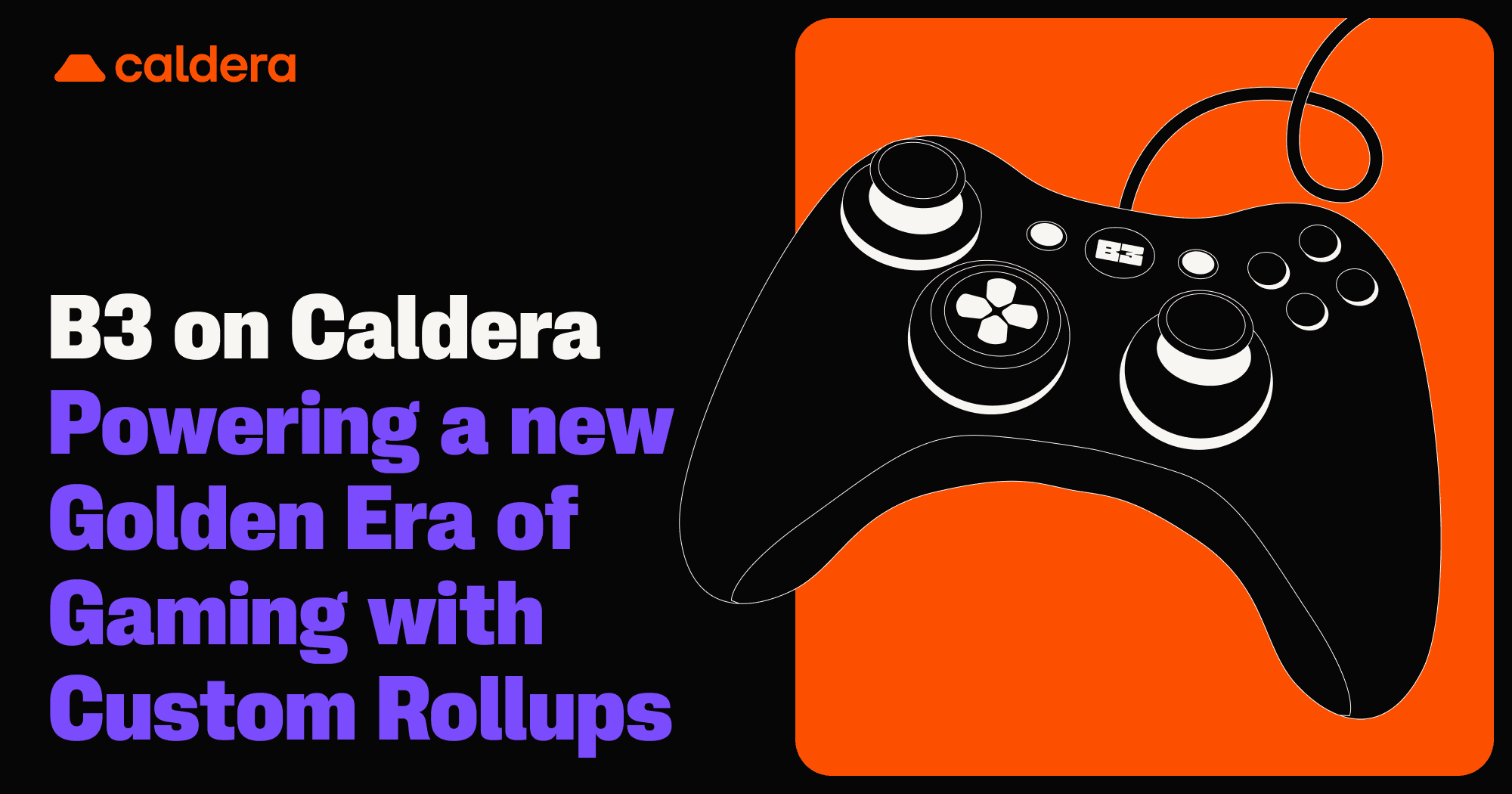What is a Rollups-as-a-Service (RaaS)?
What is a Rollups-as-a-Service (RaaS)?
TL;DR
Rollups are Layer-2 scaling solutions that process transactions off-chain, bundling them for validation on the main blockchain. This boosts efficiency by lowering costs and increasing transaction speed.
Rollups are essential to the Ethereum ecosystem. They help scale Ethereum by allowing apps to create their own blockspace and do not let network congestion caused by other applications affect their users’ experience.
Rollups-as-a-Service (Raas) allows builders to build and launch their own rollups quickly. RaaS providers deliver end-to-end solutions like customizations in the underlying tech stack to no-code management and one-click custom integrations with core infrastructure.
With RaaS providers like Caldera, builders can expect industry-leading, reliable service and access to cutting-edge technology from the leading rollup frameworks, including Arbitrum Orbit, OP Stack, Polygon CDK and ZKSync’s ZK Stack.
Rollups-as-a-service, or RaaS for short, are blockchain platforms that support builders in building and launching their dedicated rollups.
RaaS providers like Caldera abstract away the complexity of building blockchains, turning a process that would take multiple engineers dozens of hours into a one-click, no-code deployment process.
Interested in deploying your own rollup with Caldera? Get in touch with us.
How does a RaaS work?
RaaS providers help builders build customized rollups on top of existing generalized Layer-2 stacks/frameworks. For example, Caldera supports all leading rollup stacks, such as Arbitrum Orbit, OP Stack, ZK Stack, and Polygon CDK.
Building rollups on your own using rollup stacks is an intensive engineering process because builders need to understand how their chosen rollup stack works, what other layers in their modular tech stack are compatible with their stack, and finally, how to connect them all. Building a rollup also requires particular advanced expertise in cloud infrastructure, which is often too expensive or too technically complex for web3 teams to gather and distracting to their primary goal. RaaS providers make this process as easy as choosing snacks from a vending machine - pick your preferred rollup stack, choose a data availability layer and select a native gas token for your rollup. Click Deploy.
No engineering team required.
RaaS providers like Caldera can even help you narrow your selection when customizing your rollup so that the modular tech stack best suits your project’s needs. We’ll hold your hand and guide you through the process.
Why does my project need a dedicated rollup?
Over the past decade, we’ve seen how peak congestion periods have been disastrous for Ethereum’s mainchain (aka Layer 1). At the peak of the CryptoKitties craze in 2017, more than 50 thousand CryptoKitties transactions were happening per day, which took up around 25% of Ethereum’s traffic and led to gas fees spiking over $400. We also saw something similar happen at peak times during the 2021 NFT boom.
Demand for blockspace on Layer 1 (L1) can grow rapidly if an app or NFT collection takes off in popularity. When many projects share L1 blockspace, it can become a huge problem if a few projects are hogging it all. Gas fees can skyrocket for everyone when usage goes up on the L1.
This isn’t scalable or sustainable, which is why Ethereum transitioned to a rollup-centric roadmap. We’ve started seeing Layer-2 (L2) blockchains like Arbitrum and Optimism move much of that transaction volume onto rollups. With RaaS providers like Caldera, projects can quickly spin up their own dedicated L2 rollup that functions as a separate blockchain. It’s like moving from a shared hosting plan to a dedicated server.
There are many other advantages to deploying a rollup using a RaaS, including:
Faster Block Times: Caldera rollups can process transactions in as little as ten milliseconds instead of 10 seconds on Ethereum L1.
Lower Fees: Gas fees are $0.001 on average when deploying rollups on Caldera.
Full Customization: Choose the execution layer, data availability layer, sequencing, native gas fee token, and over 100 integrations that fit your project’s needs.
Security: Deploying rollups on Caldera can give you greater security guarantees than building a standalone blockchain because transactions settle to Ethereum, the substrate of choice for top web3 builders.
Industry-leading Tech Support: Caldera is a builder’s ally through building, launching and maintaining your rollup. Our round the clock engineering team help builders manage their infrastructure and automatically upgrade your rollup as new framework updates roll out so that everything runs smoothly.
The Metalayer: Caldera’s RaaS platform enables rollups to opt into the Metalayer — a unified ecosystem of Ethereum rollups who enjoy seamless inter-rollup connectivity, shared security and scalability. This makes it easy for developers to deploy apps across all Caldera rollups simultaneously and for rollups to share infrastructure and resources seamlessly.
What are the use cases for a RaaS?
Any project needing a custom blockchain and not wanting to compete for limited resources can benefit from a RaaS. Whether you’re a new DeFi protocol, an established NFT community building an appchain (an application-specific blockchain), or a web2 business looking for a seamless way to bring your industry onchain, RaaS providers like Caldera have brought the world into the vending machine era of blockchains. Now, it’s as easy to deploy one as tapping a button.
Get in touch if you’d like to deploy your rollup with Caldera!
About Caldera
Caldera is one of the fastest-growing rollup ecosystems on Ethereum, empowering web3 teams to launch high-performance, customizable, application-specific rollups. Dozens of leading EVM chains, including Manta, Apechain, Kinto, Injective, RARI Chain and Zero Network by Zerion, use our trusted Rollups-as-a-Service platform to enjoy unified connectivity with rollups across all leading frameworks.






